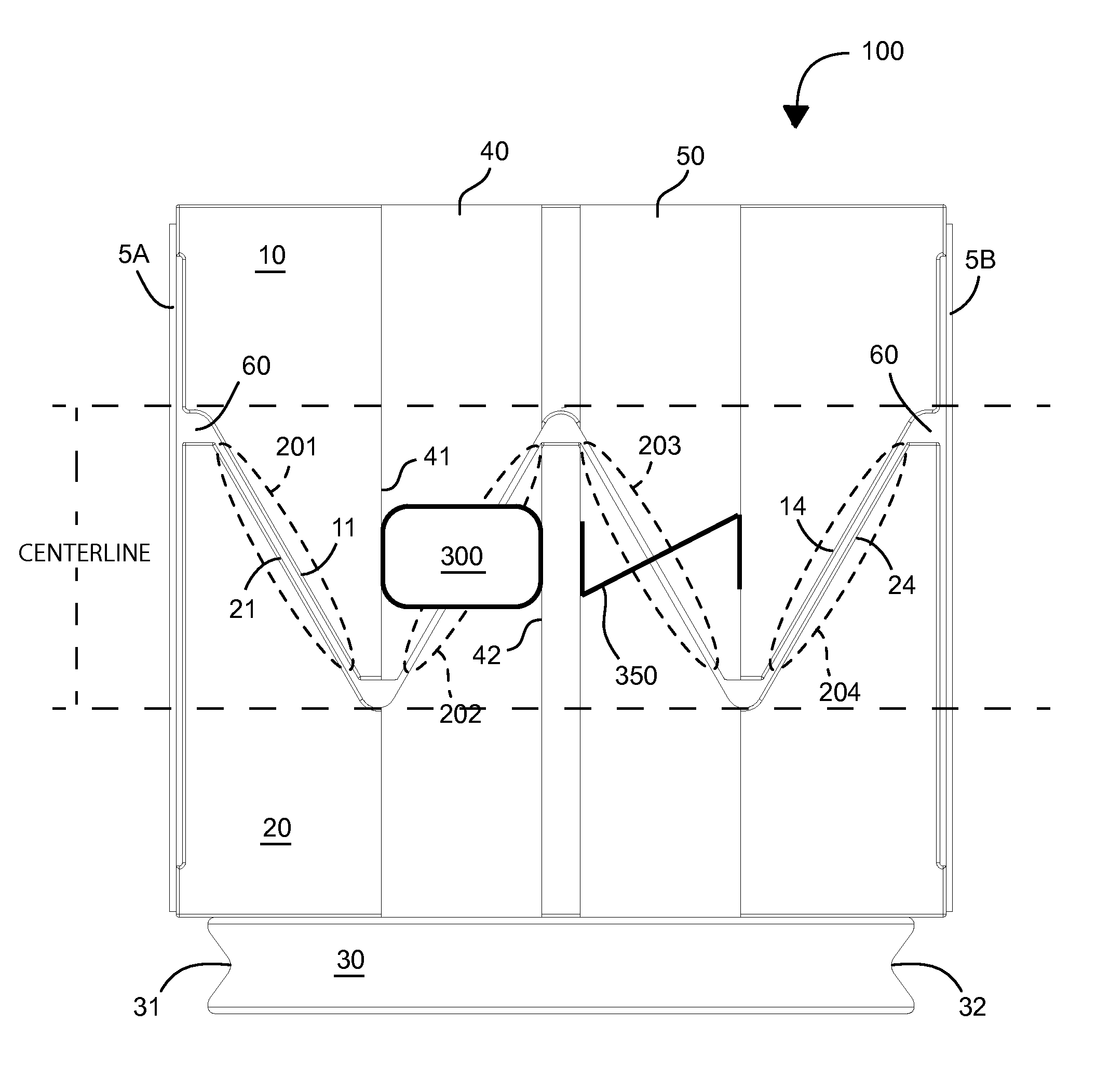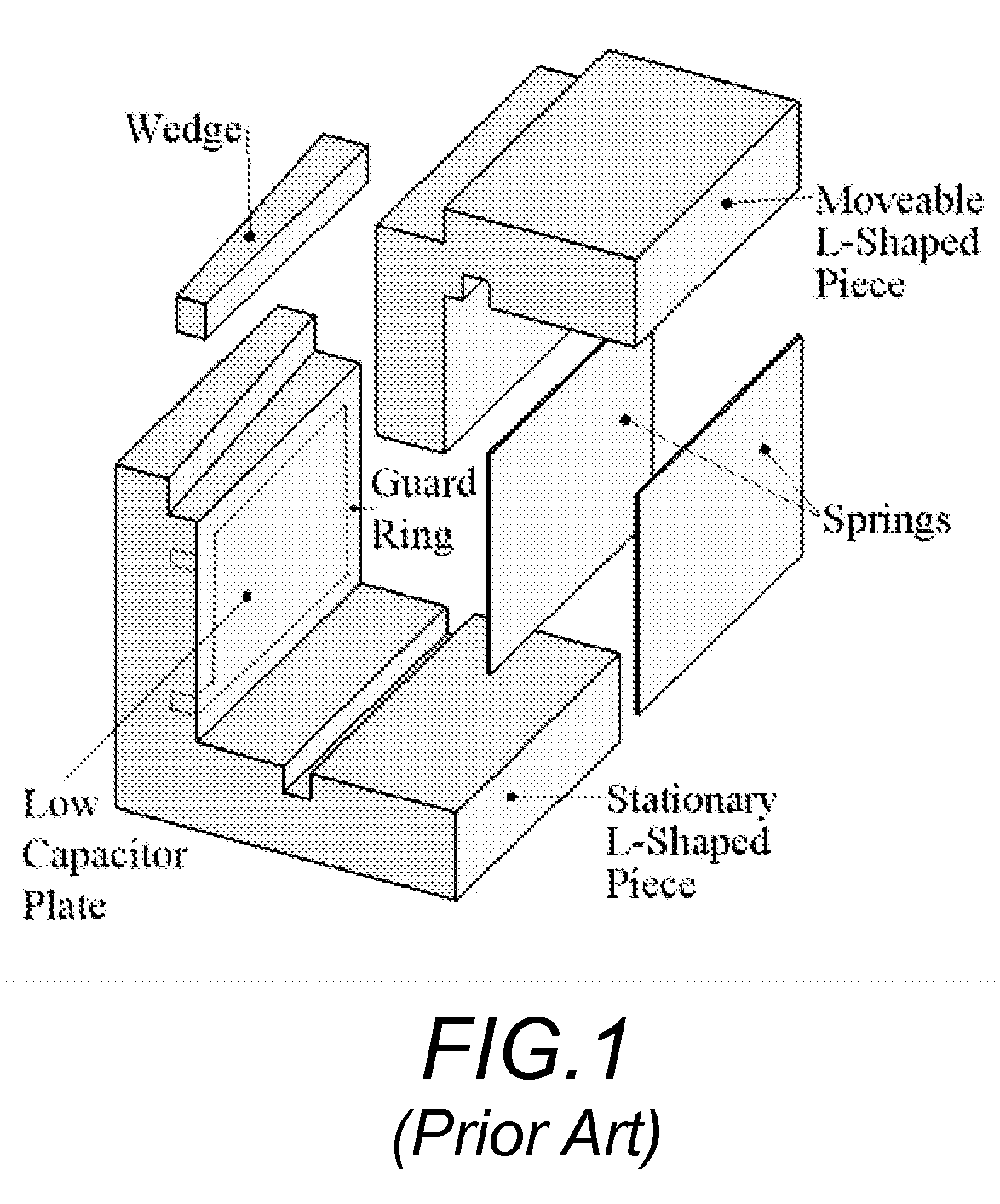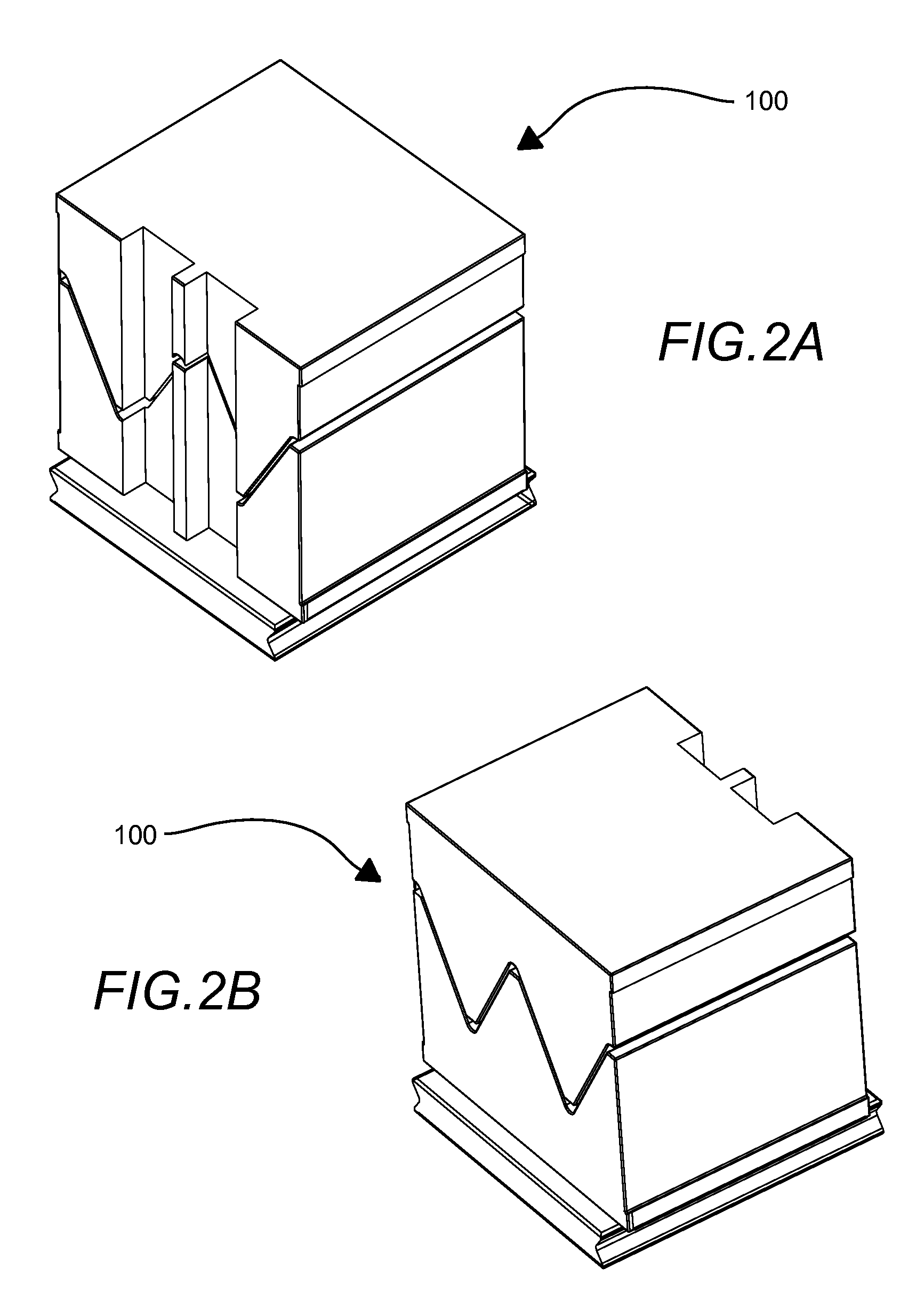Ultrasensitive ratiometric capacitance dilatometer and related methods
a capacitance dilatometer and ultrasensitive technology, applied in the field of ultrasensitive ratiometric capacitance dilatometers and dilatometers, can solve the problems of large “empty cell effect, difficult to successfully implement instruments, and inability to measure thermal expansion, etc., to reduce the effect of temperature gradients, reduce the effect of adsorption gas, and improve manufacturability
- Summary
- Abstract
- Description
- Claims
- Application Information
AI Technical Summary
Benefits of technology
Problems solved by technology
Method used
Image
Examples
examples
[0036]Now turning to the drawings, FIG. 2A shows a front perspective view of a ratiometric capacitance dilatometer cell 100 in accordance with one embodiment; a front side, right side, and top side of the dilatometer cell are shown.
[0037]The dilatometer cell generally comprises a cube made up of a first cell portion having one or more angled protrusions and a second cell portion having one or more angled grooves, the first cell portion being configured to nest with the second cell portion such that one or more respective surfaces of the angled protrusions are configured to oppose and overlap with respective surfaces of the angled grooves. In this regard, the first and second cell portions are nested to form a volume of the dilatometer cell, with two or more overlapping surfaces (four overlapping surfaces are shown). The cell has a right side and a left side, each of the right and left sides are configured to about one of two planar sheets referred to herein as a “springs”. A base po...
PUM
| Property | Measurement | Unit |
|---|---|---|
| length | aaaaa | aaaaa |
| temperature | aaaaa | aaaaa |
| angle | aaaaa | aaaaa |
Abstract
Description
Claims
Application Information
 Login to View More
Login to View More - R&D
- Intellectual Property
- Life Sciences
- Materials
- Tech Scout
- Unparalleled Data Quality
- Higher Quality Content
- 60% Fewer Hallucinations
Browse by: Latest US Patents, China's latest patents, Technical Efficacy Thesaurus, Application Domain, Technology Topic, Popular Technical Reports.
© 2025 PatSnap. All rights reserved.Legal|Privacy policy|Modern Slavery Act Transparency Statement|Sitemap|About US| Contact US: help@patsnap.com



